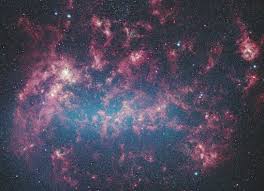A huge, electron-counting device has indirectly found a measurement of the slimiest acknowledged element in Physics and included the proof for dark matter. This measurement is the foremost outcome from an international endeavor to gauge the neutrinos’ mass, which are particles filling our cosmos and detect its structure, however, we are hardly capable of determining at all. As per the German-located Karlsruhe Tritium Neutrino experiment (KATRIN), Neutrinos have no more than 0.0002% of an electron’s mass. That figure is so squat that even if we counted all of the neutrinos in the cosmos, they could not elucidate its missing mass, thus further adding to the heap of proof for presence of dark matter.
It is more or less likely to accurately gauge Neutrinos on their own as they have so diminutive mass and are likely to bounce of detectors without interrelating with them. Thus, to find neutrinos’ mass, Robertson said, KATRIN calculates the most energetic electrons and functions reverse from that digit to infer the mass of the neutrino. The foremost outcome from KATRIN has been declared, and the scientist came to an early deduction: Neutrino has a mass no more than 1.1 eV (electron volts). Thus, this small digit from a huge vacuum chamber located in Germany at the very least includes to the mound of proof that the Universe has particles that Physics still does not comprehend.
On the other end, in the most extreme areas of the cosmos, galaxies are being devastated. Their star creation is being ceased and astronomers aspire to know this is happening. The foremost Canadian-directed large project on one of the prominent telescopes in the world is anticipating doing just that. The latest program, dubbed the Virgo Environment Traced in Carbon Monoxide survey (VERTICO), is examining, in extreme depth, how galaxies are slayed by their environment.


